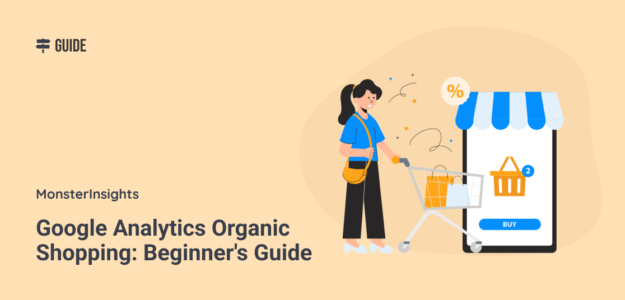Running an eCommerce business comes with a lot of really important numbers to try to keep track of. You also need to understand the significance of those metrics so that you can figure out how to grow your business. One metric that you might not know much about yet is organic shopping traffic in GA4.
Organic shopping is one of the new traffic channels that debuted in Google Analytics 4. What exactly is it, though, and why does it matter? How do you get more of it?
In this article, I’ll explain what organic shopping traffic is, how it’s categorized in GA4, how to track it, and how to get more of it.
Why Track Organic Shopping in GA4?
Organic shopping in Google Analytics 4 (GA4) refers to the traffic your website gets from unpaid listings on shopping platforms. This includes clicks from free product listings on Google Shopping, as well as organic product listings on platforms like Amazon, Etsy, or eBay.
For example, when you search for a product in Google search (like a paddle board, for instance), the organic shopping results are the ones that display below the sponsored products:
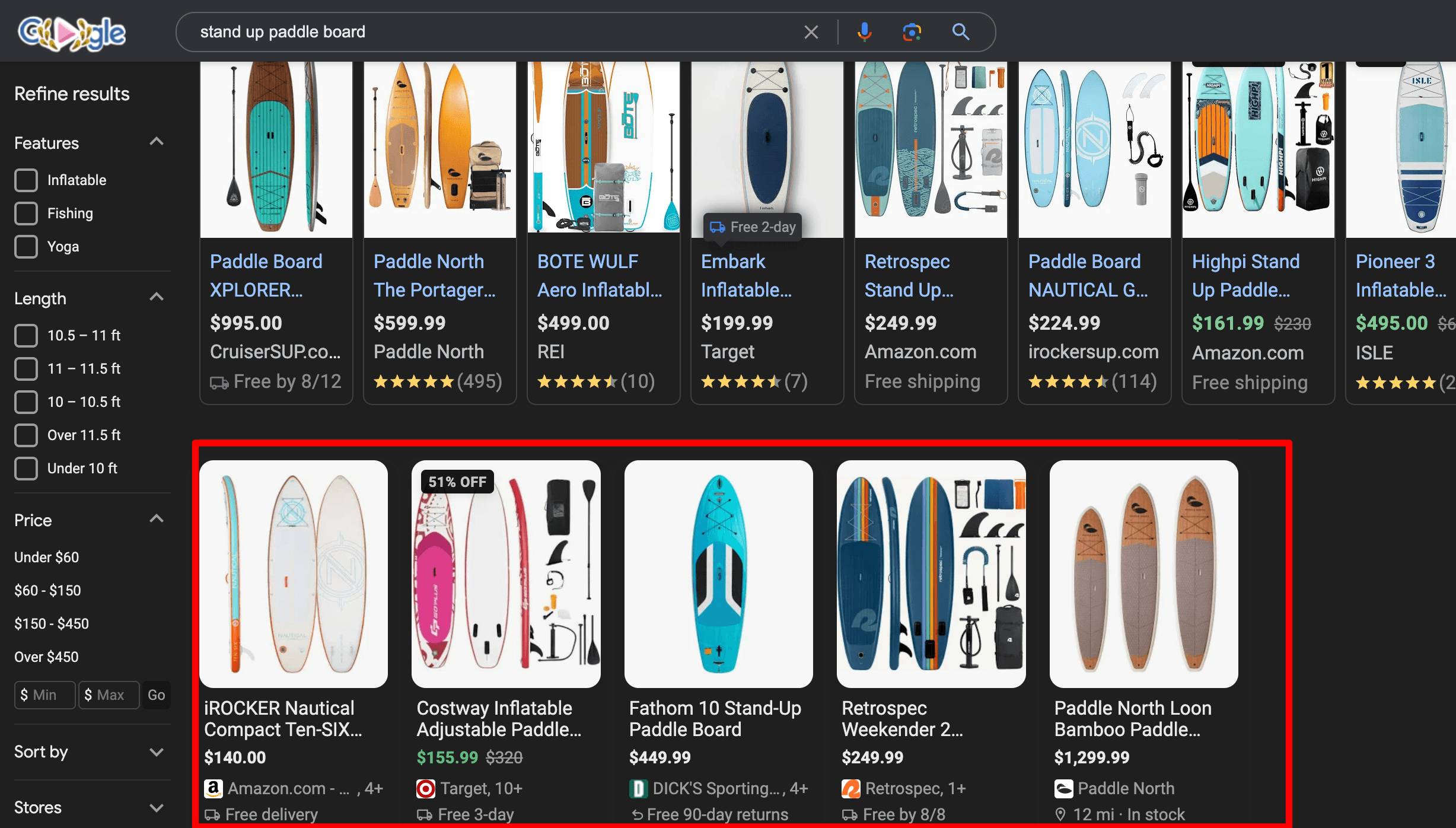
Tracking your organic shopping traffic in Google Analytics is essential for understanding where and how your products are appearing in organic searches on Google or other shopping sites. When you track organic shopping traffic, you’ll be able to see metrics like:
- Total sessions
- Engaged sessions
- Key events
- Total revenue
- Items purchased
- Item revenue
When you can see accurate data about your products, you’re much more likely to be able to make the right changes that’ll lead to business growth.
How to Track Organic Shopping in Google Analytics
If you’re a WordPress user, the best way to track eCommerce metrics, including organic shopping, is with MonsterInsights.
MonsterInsights is the best Google Analytics plugin for WordPress. It not only sets up eCommerce tracking in Google Analytics for you with just a couple of clicks, but it also puts all your most important metrics right inside your WordPress dashboard.
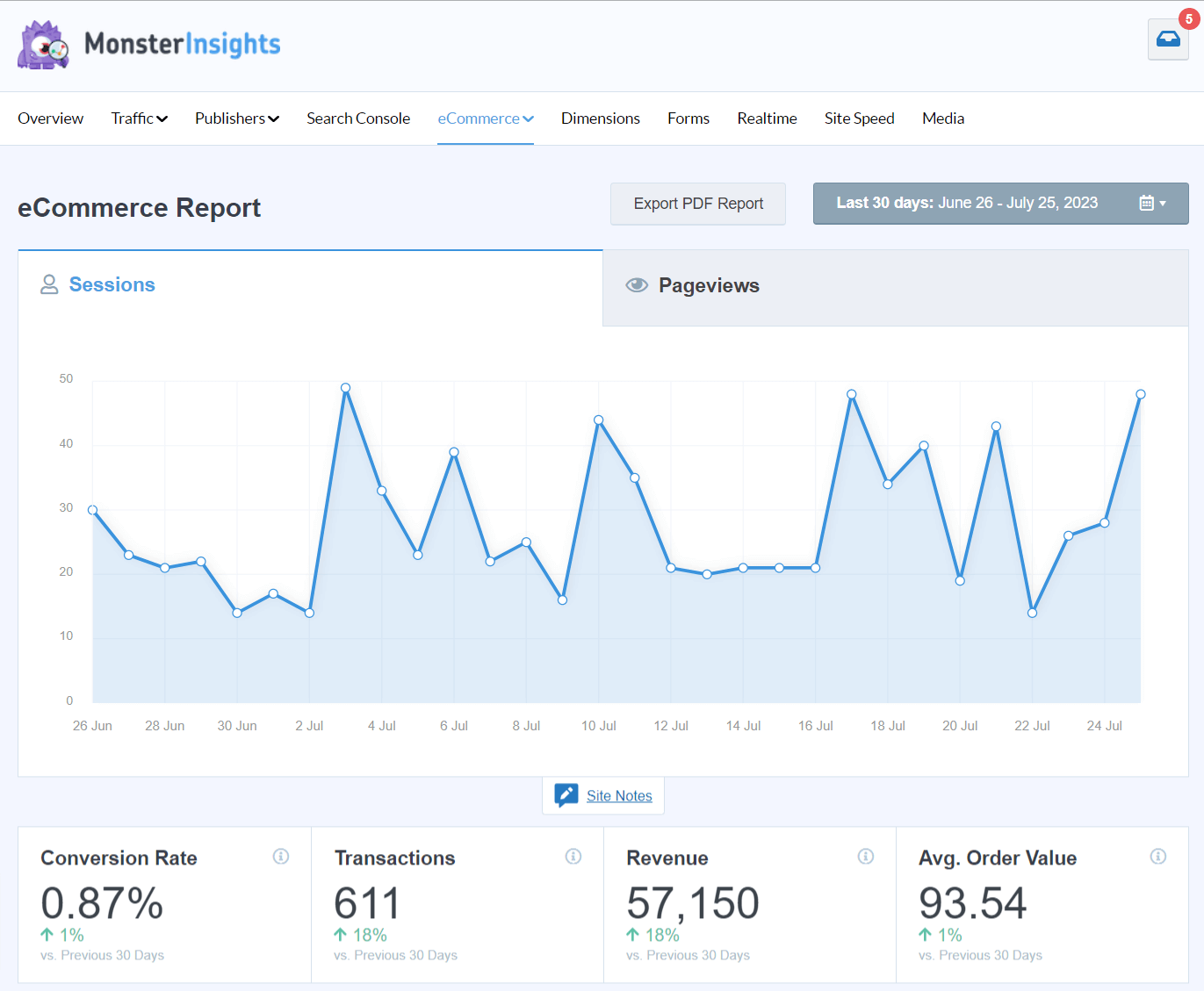
Plus, MonsterInsights adds more advanced tracking features to help you grow your business, including form tracking, a user journey report, a campaigns report, click tracking, and much more.
Get started with MonsterInsights now!
Once you install MonsterInsights and connect it with your Google Analytics account, you’ll see your organic shopping traffic in the Traffic » Source/Medium report:
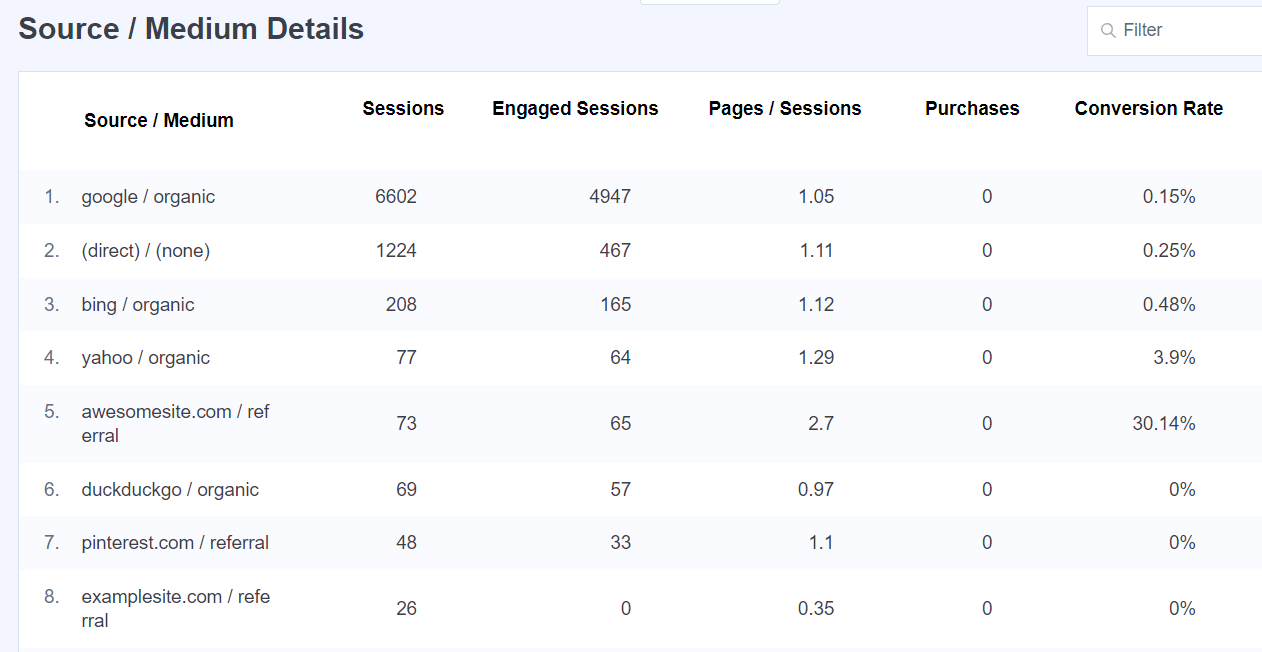
As long as you have eCommerce tracking set up and you’ve gotten some organic shopping traffic, you’ll find organic shopping data in Google Analytics.
To see organic shopping data, head to Reports » Acquisition » Traffic acquisition. You’ll see Organic Shopping in the table:
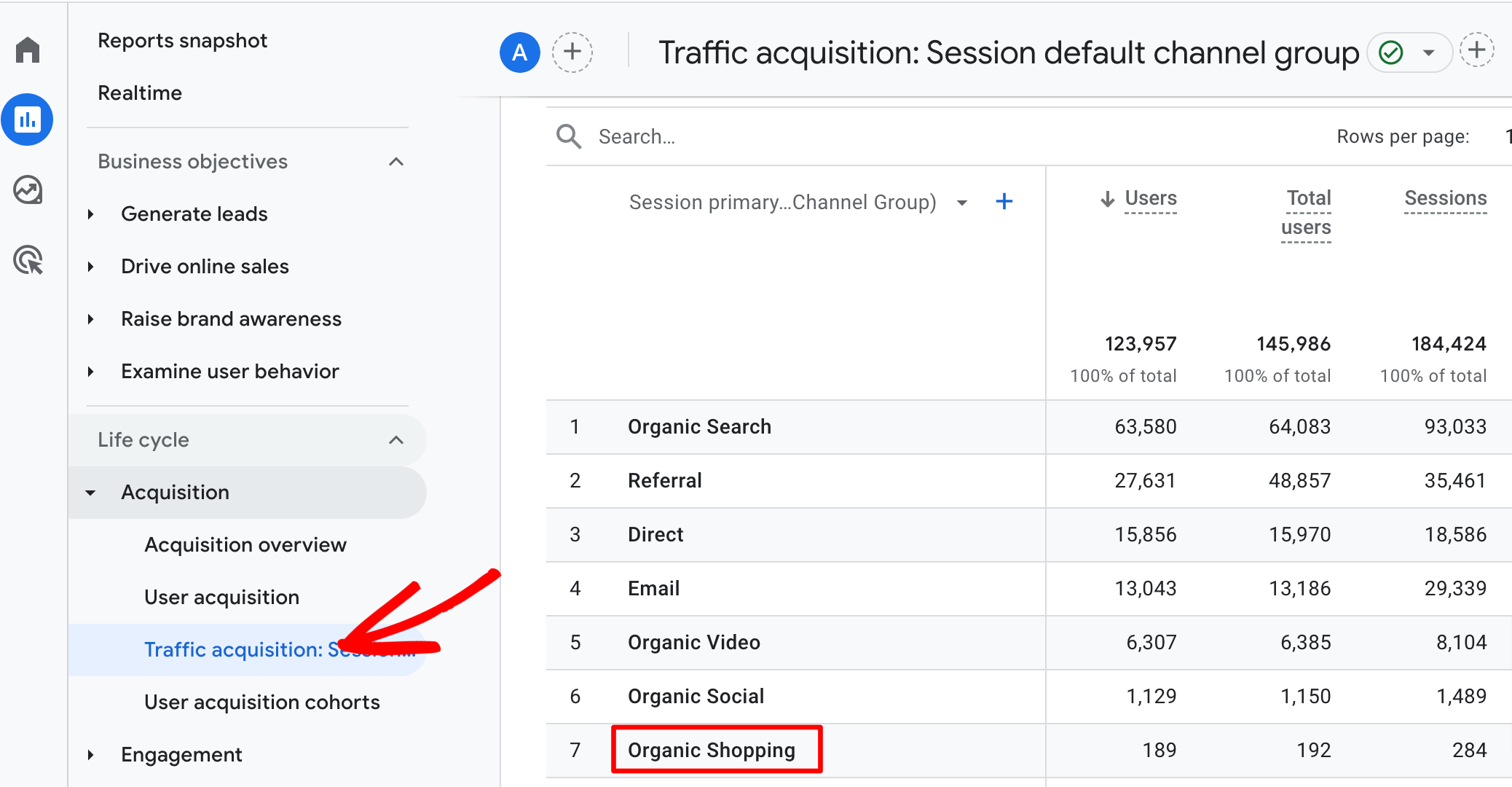
As you scroll over in the table, you’ll see more metrics like engaged sessions, engagement rate, key events, and revenue.
Focusing on these metrics can help you gauge the effectiveness of your product listings and optimize them for better visibility and conversions.
Organic Shopping Analytics: A Deeper Dive
With just a little bit of customization, you can see more data about your organic shopping traffic. For example, let’s take a look at exactly which products got clicked on from those organic listings.
To do that, head back to the Acquisition » Traffic acquisition report and click on the blue plus sign to add a secondary dimension:
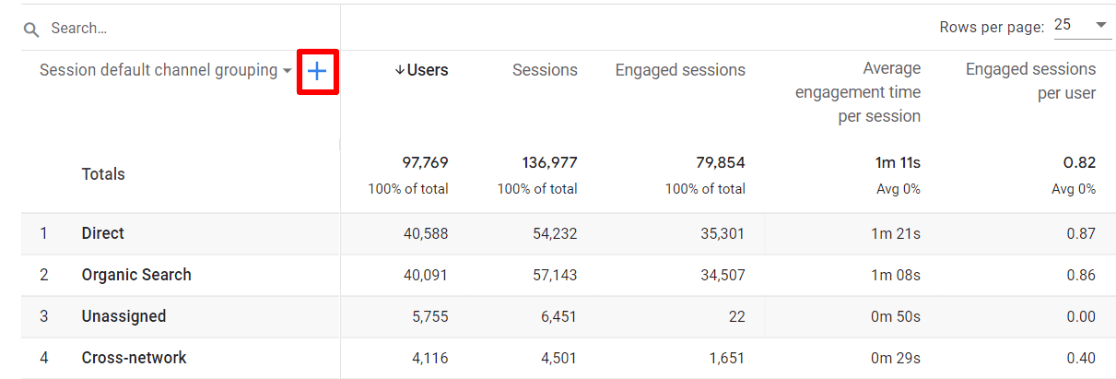
Now, click on Page/screen » Landing page + query string:
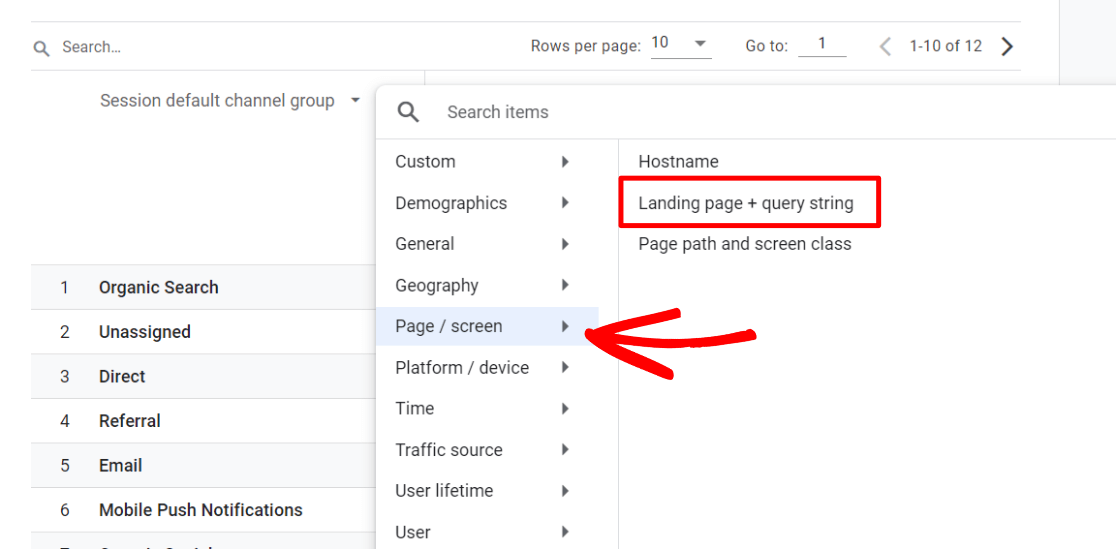
Finally, type “organic shopping” into the search bar and hit enter to search:
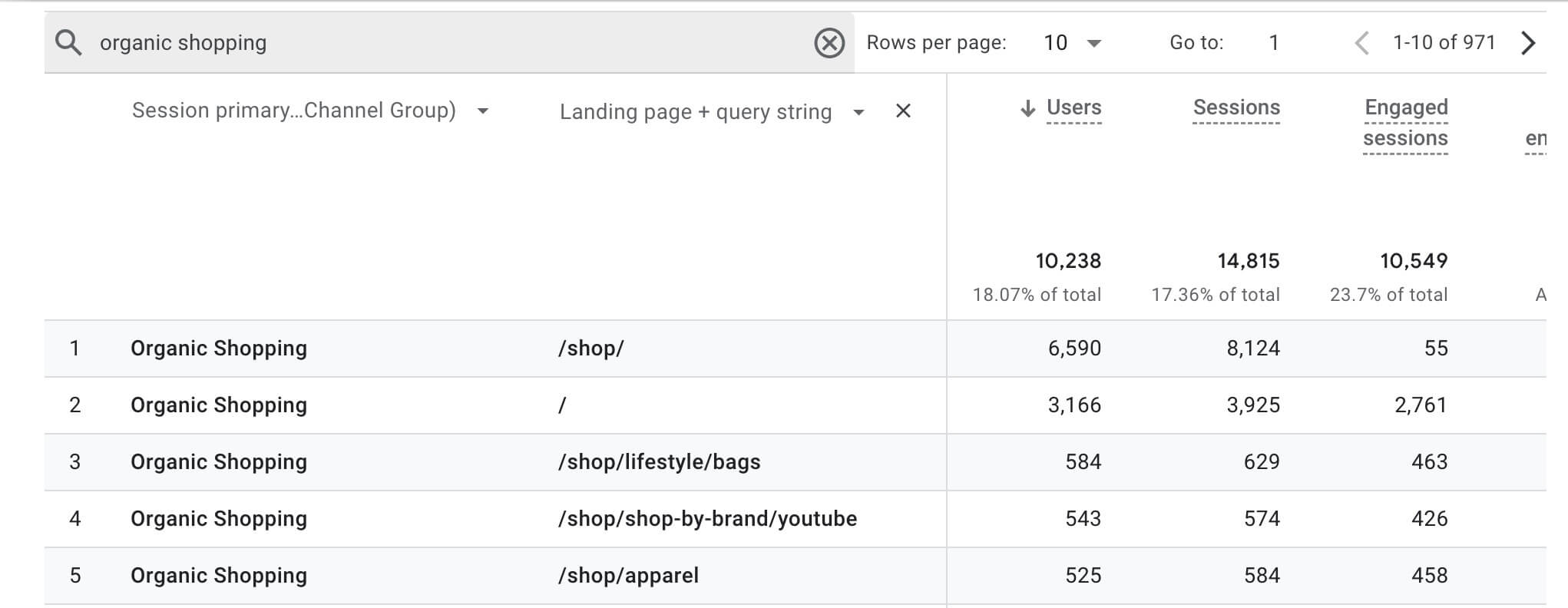
Now, you can see which of your products or product categories are getting organic shopping traffic, plus whether or not the sessions to those pages turned into conversions.
This information is crucial for seeing which products are ranking in organic shopping listings and how traffic to those products is flowing on your website. You’ll also be able to see which landing page visits are resulting in sales and revenue.
How to Get More Organic Shopping Traffic
Now you know how to find out how much organic shopping traffic you’re getting, plus which pages that traffic is landing on. How can you use that data to help you get more traffic that converts?
Here are a few tips for how to boost your organic shopping performance:
1. Optimize product titles and descriptions with relevant keywords.
Making sure your product titles, descriptions, and other assets are properly optimized according to SEO best practices is an essential part of getting them to appear in organic shopping results.
For a full tutorial on optimizing your products, check out 11 WooCommerce SEO Tips to Increase Search Rankings Today.
2. Ensure your product feed is up-to-date and accurate.
Keeping your Google Merchant Center product feed up to date is important for getting that organic shopping traffic. You might want to try automated feeds so that they’ll update automatically.
3. Use high-quality images that comply with shopping platform guidelines
Did you know that one of the places Google might show your products is in Image search? In order for your products to not only show up in free Google results but also get clicks, you need to have a really good-looking, optimized image.
4. Use product schema.
Using product schema is a great way to make sure Google understands all the different aspects of your products, such as ratings, pricing, sales, and much more. For a tutorial on setting up product schema, check out this tutorial from All in One SEO.
That’s it!
You might also want to check out:
How to Set Up WooCommerce Google Analytics
WooCommerce Conversion Tracking: Complete Guide
9 Google Analytics SEO Hacks to Increase Search Traffic
Finally, don’t forget to follow us on YouTube for more helpful reviews, tutorials, and Google Analytics tips.
